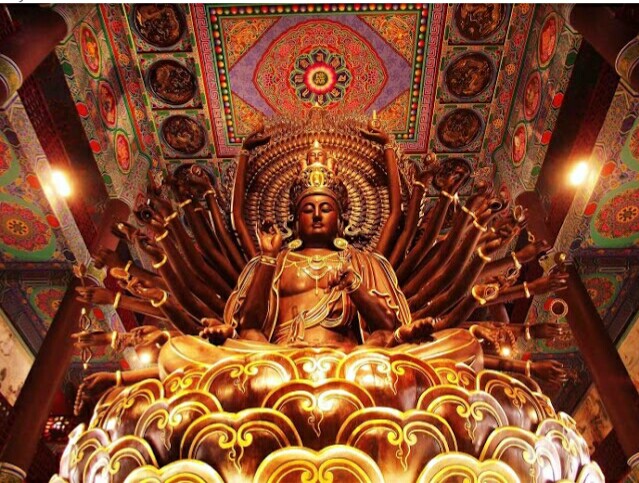The treatise Establishing Phenomena as Divine by Rongzom Pandita explicates the view of the generation stage. First of all, we should know that the essence of all things is the mandala of the Buddha. To reveal this mandala and actualize its theoretical view, we must rely on the practice of the generation stage.
Vajrayana holds that ordinary people have two kinds of attachment: the first is attachment to phenomena, that is, attachment to the inherent impurity of phenomena; the second is attachment to phenomena being not only impure but also real.
Encompassed in the second attachment are the Sutrayana notions of “attachment to self of person” and “attachment to self of phenomena.”The first attachment can be eliminated with the practice of the generation stage. However, if we know only the method but not the view, confusion may arise during the practice—for instance, one might ask whether this practice is the same as the white skeleton visualization in Theravada, wherein an illusion is produced after the visualization.
Such confusion can cause great obstacles to our practice; hence, it is important to establish the view—to resolutely believe that all phenomena are the mandala of the Buddha. On the other hand, having the view but not actually applying it to practice, the knowledge remains always just theoretical.
Even if we can accept the view that all phenomena are the mandala of the Buddha, there is no way we can really experience how that is so. This is why we need the practice.
Most people believe the world as we know it will always stay the same as long as our sense organs do not change accidentally over the course of life. This is why the present world appears real, stable, but also impure to us.But in fact, this is not so. Let’s first put aside the argument whether the world exists or not. Even if it exists, the world cannot affect us in any way if our five sense organs do not interact with it; it is the same as if it does not exist.
For example, if our ear consciousness stops perceiving sound waves, then it does not matter, objectively speaking, whether sound waves exist or not. If they are perceived, sound in the impure state is a phenomenon of our mind; in the pure state, sound is transformed into the words of the Buddha.
After the generation stage practice is accomplished, this so-called unchanging world will be completely inverted. All impure phenomena will no longer exist; instead, the mandala of the buddhas will appear before the practitioner. The process of an ordinary person attaining buddhahood is in fact the process of transforming consciousness into wisdom.
Through practicing the generation stage, pure phenomena—that all is the mandala of the Buddhas—will manifest; this is also the state of the eighth-ground Bodhisattva after emerging from meditation.
*Footnote






































